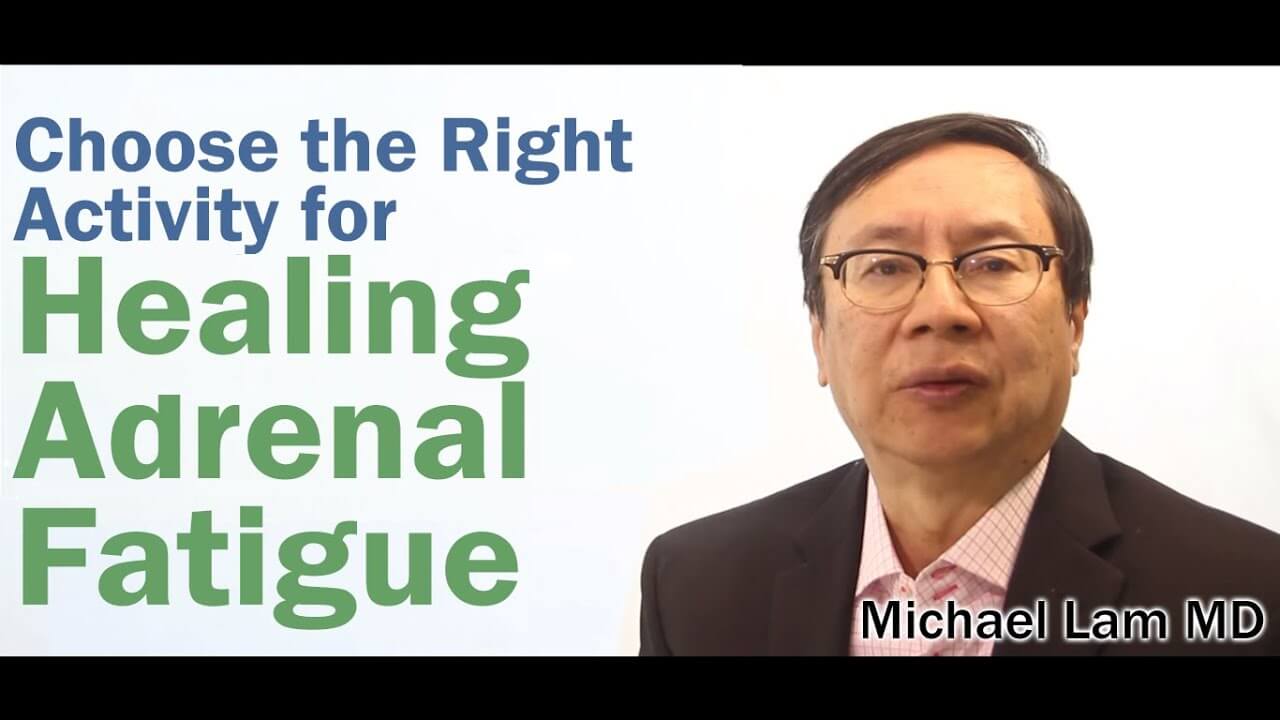
 While a number of studies have linked physical activity to a reduced risk of cardiovascular disease, little research has been done to determine the optimal frequency, duration, and intensity to reduce the risk of particular types of disease. However, new evidence indicates moderate exercise may be more beneficial than frequent or high intensity exercise. This is especially true when trying to treat Adrenal Fatigue, as the body is often in a fragile state and overexertion can result in what's known as an adrenal crash.
While a number of studies have linked physical activity to a reduced risk of cardiovascular disease, little research has been done to determine the optimal frequency, duration, and intensity to reduce the risk of particular types of disease. However, new evidence indicates moderate exercise may be more beneficial than frequent or high intensity exercise. This is especially true when trying to treat Adrenal Fatigue, as the body is often in a fragile state and overexertion can result in what's known as an adrenal crash.
In 1998, over a million healthy women answered a number of questions regarding their frequency of physical activity and other personal habits and characteristics, including how much time they spent each week in certain activities, including housework, gardening, cycling, and walking. The average age of the participants was 56, and none of the participants had been diagnosed with cancer, heart disease, blood clots, stroke, or diabetes as of the beginning of the study.
Researchers at the National Health Service linked the women's answers with cause-related hospital admissions and death records for the women for an average of nine years. They used Cox regression techniques to determine relative risk of vascular events based on their reported physical activity levels.
Women who engaged in exercise vigorous enough to raise the heart rate or break a sweat 2-3 times per week had a 20% lower risk of cardiovascular events than those who were more sedentary. Surprisingly, however, increased activity did not seem to reduce risk more than moderate activity.
 During the follow up period, 49,113 of the women suffered a coronary heart disease event, 17,822 experienced a cerebrovascular event, and 14, 550 suffered a thromboembolism. Women who reported moderate activity levels were significantly less likely to have suffered any of these types of conditions compared to inactive women. Women who reported more frequent and strenuous activity levels had somewhat higher risk of all conditions than those who reported moderate activity 2-3 times each week. The risks of hemorrhagic and ischemic stroke and thromboembolisms, with or without pulmonary embolism, were similar.
During the follow up period, 49,113 of the women suffered a coronary heart disease event, 17,822 experienced a cerebrovascular event, and 14, 550 suffered a thromboembolism. Women who reported moderate activity levels were significantly less likely to have suffered any of these types of conditions compared to inactive women. Women who reported more frequent and strenuous activity levels had somewhat higher risk of all conditions than those who reported moderate activity 2-3 times each week. The risks of hemorrhagic and ischemic stroke and thromboembolisms, with or without pulmonary embolism, were similar.
The bottom line is you don’t have to be a fitness geek in order to reduce your cardiovascular risk. It’s estimated that lack of physical activity is a contributing factor in 250,000 deaths in the United States every year. Reducing your risk does not need to be a daunting proposition, just getting your blood pumping for 30 minutes a couple of times a week is plenty. Try going to for a walk on your lunch break or after dinner. Get your friends or family in on the action to make it more pleasant, or download an audiobook or podcast to pass the time.
 Exercise is an important component of Adrenal Fatigue Syndrome recovery. Low impact exercise, such as Yoga, walking, and Tai Chi, can be valuable to rebuild the body and treat Adrenal Fatigue Syndrome. Remember that during aerobic exercise, adrenaline and norepinephrine are both released in order for the heart rate to rise and muscle movement to occur. Those with advanced AFS often already have a body that is flooded with both of these hormones. Further increases can cause adrenal crashes. The more advanced the adrenal weakness, the higher the risk. Exercise must therefore not only be moderate, but the timing and intensity must match the body’s state of weakness at every point in time for successfully healing Adrenal Fatigue. Over-exertion for those with advanced AFS could be reached with only a few minutes of walking. Exercise is not good for your body when it is very weak or when you begin to treat Adrenal Fatigue Syndrome. We have developed various sequential levels of exercises designed to help those recover from AFS, starting with those who are bedridden and incapacitated. Those who have already recovered from AFS should focus on moderate exercise rather than high intensity as these invariably will lead to a flood of adrenaline output as a way to achieve peak performance. Recurrent adrenal crashes can be triggered.
Exercise is an important component of Adrenal Fatigue Syndrome recovery. Low impact exercise, such as Yoga, walking, and Tai Chi, can be valuable to rebuild the body and treat Adrenal Fatigue Syndrome. Remember that during aerobic exercise, adrenaline and norepinephrine are both released in order for the heart rate to rise and muscle movement to occur. Those with advanced AFS often already have a body that is flooded with both of these hormones. Further increases can cause adrenal crashes. The more advanced the adrenal weakness, the higher the risk. Exercise must therefore not only be moderate, but the timing and intensity must match the body’s state of weakness at every point in time for successfully healing Adrenal Fatigue. Over-exertion for those with advanced AFS could be reached with only a few minutes of walking. Exercise is not good for your body when it is very weak or when you begin to treat Adrenal Fatigue Syndrome. We have developed various sequential levels of exercises designed to help those recover from AFS, starting with those who are bedridden and incapacitated. Those who have already recovered from AFS should focus on moderate exercise rather than high intensity as these invariably will lead to a flood of adrenaline output as a way to achieve peak performance. Recurrent adrenal crashes can be triggered.
In order to optimally recover from adrenal fatigue, the NeuroEndoMetabolic (NEM) stress responseSM must function in balance as well. This holistic approach to recovery includes the hormone response discussed above, as well as how the body responds metabolically. The metabolism works to clear toxins from the body, and help to clear waste and excess hormone. Exercise helps to increase metabolism, which increases the turn-over and cleansing process of our cells. Blood flow and circulation also increase with exercise, which allows necessary nutrients and fluids to maintain a healthy flow through the body. Holistically, exercise helps with adrenal fatigue recovery, but also brings overall balance back to our body.

